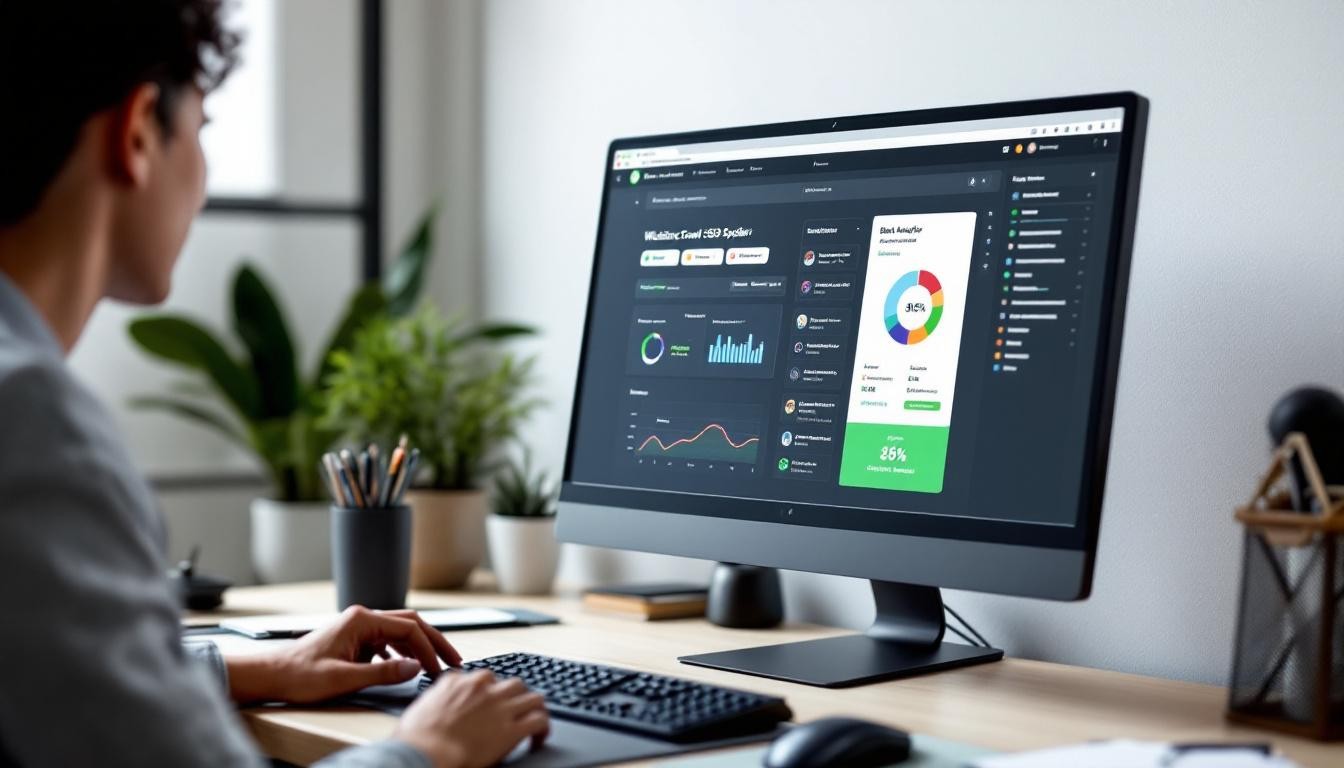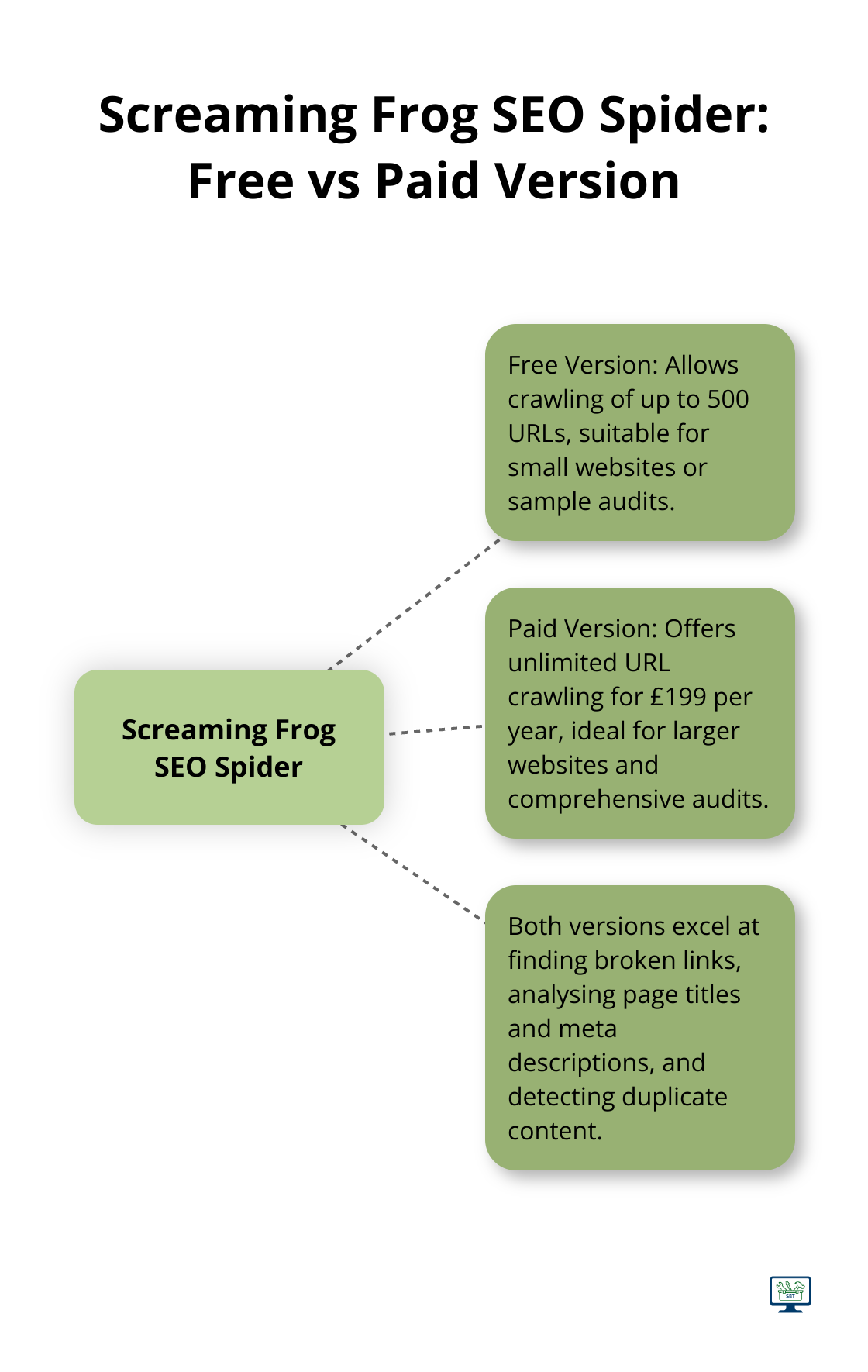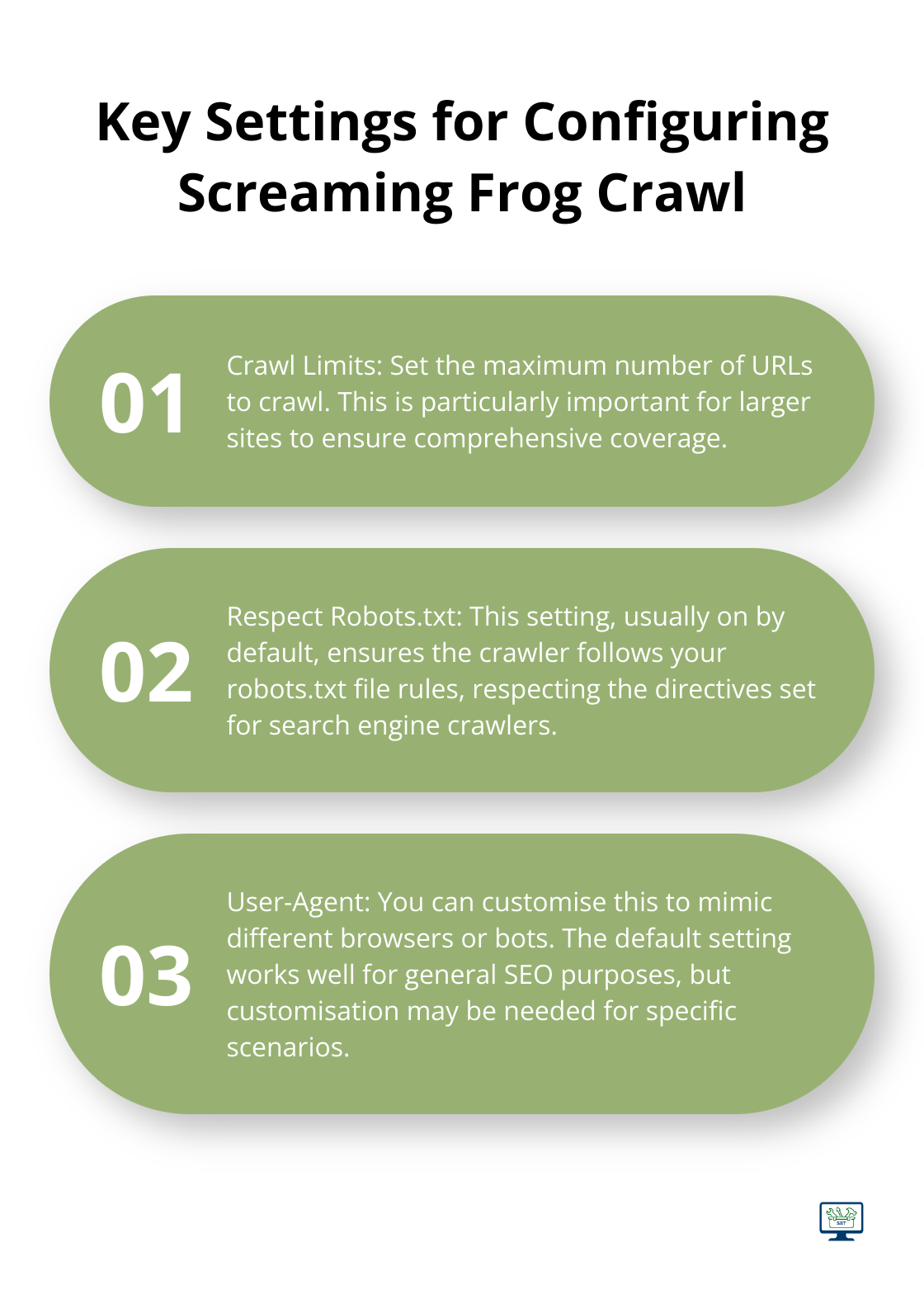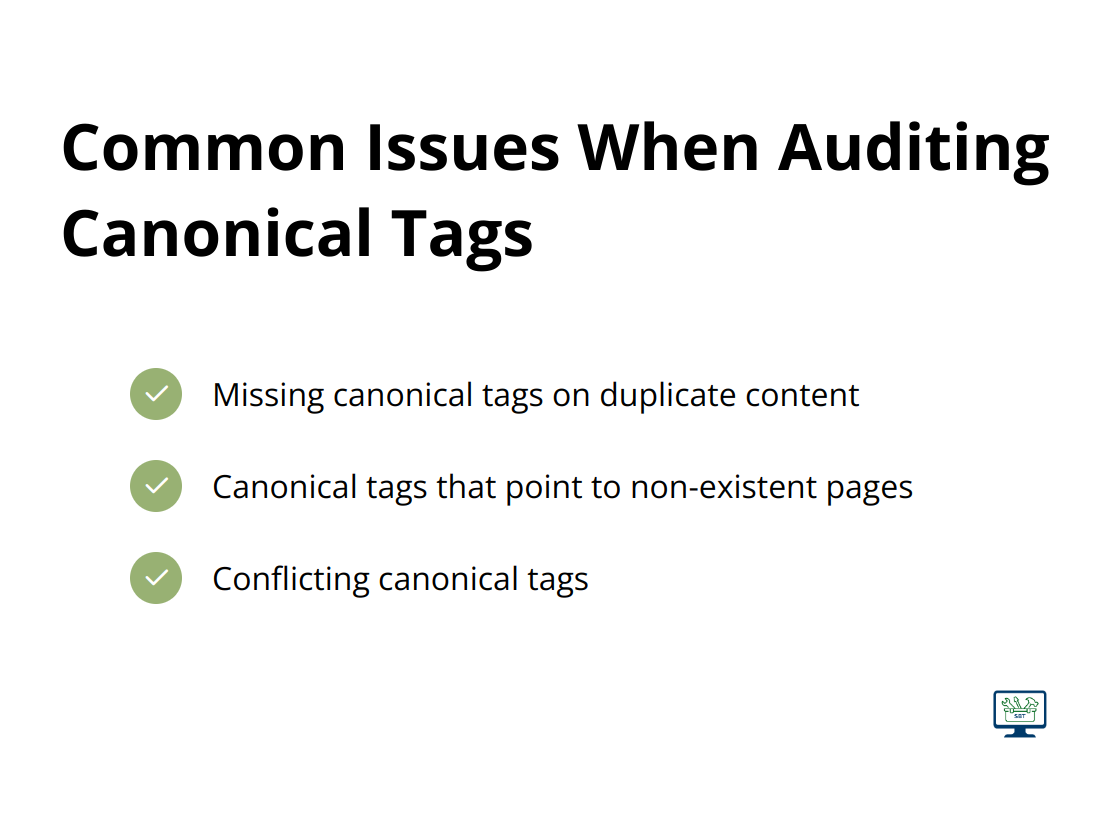How to Use Screaming Frog SEO Spider for Better Rankings

Published On Aug 25,2025
At WebsiteStrategies, we know that technical SEO is crucial for improving website rankings. One tool that’s become indispensable for our team is Screaming Frog SEO Spider.
This powerful crawler can uncover a wealth of SEO issues that might be holding your site back. In this post, we’ll show you how to harness the full potential of Screaming Frog SEO Spider to boost your rankings and outperform your competitors.
What is Screaming Frog SEO Spider?
Screaming Frog SEO Spider is a powerful website crawler that helps SEO professionals and website owners identify and fix technical issues that might hinder their search engine rankings. This tool has become essential for conducting thorough website audits and uncovering hidden SEO problems.
A Swiss Army Knife for SEO
Screaming Frog SEO Spider offers a wide range of features that make it stand out from other SEO tools. It can crawl up to 500 URLs for free, with unlimited crawling available in the paid version (£199 per year). This tool excels at finding broken links, analysing page titles and meta descriptions, and detecting duplicate content.

One of its most useful capabilities is custom data extraction. You can use XPath, CSS Path selectors, or regex to capture specific elements from your site. This feature allows for highly targeted analysis of your website’s structure and content.
Visualising Your Site Architecture
Another standout feature of Screaming Frog is its ability to create visual representations of your site’s architecture. These interactive diagrams and tree graphs make it easy to evaluate your internal linking structure and identify areas for improvement.
Integration with Other Tools
Screaming Frog doesn’t work in isolation. It integrates seamlessly with Google Analytics, Search Console, and PageSpeed Insights. This integration provides a more comprehensive view of your website’s performance, combining technical SEO data with user behaviour and performance metrics.
How Screaming Frog Stands Out
While many SEO tools focus on keyword research or backlink analysis, Screaming Frog specialises in technical SEO. Its depth of analysis and flexibility set it apart from other tools in the market. For example, it can crawl JavaScript websites using an integrated Chromium rendering service, ensuring accurate content analysis even on complex, modern websites.
Screaming Frog also offers features that many other tools don’t, such as the ability to generate XML sitemaps and image sitemaps with advanced configuration options. This can be particularly useful for large e-commerce sites or content-heavy platforms.
Screaming Frog SEO Spider has proven to be an indispensable tool for improving search engine rankings. Its comprehensive analysis capabilities, combined with its user-friendly interface, make it a top choice for SEO professionals looking to gain a competitive edge in the ever-evolving world of search engine optimisation.
Now that we understand what Screaming Frog SEO Spider is and its key features, let’s explore how to set up and run your first crawl.
How to Set Up and Run Your First Screaming Frog Crawl
Download and Installation
To start using Screaming Frog SEO Spider, visit the official website and download the appropriate version for your operating system (Windows, Mac, or Ubuntu). The installation process is straightforward-follow the on-screen prompts to complete it.
After installation, you’ll see options for the free version (limited to 500 URLs) or the paid version. Small business owners can often manage with the free version, while larger sites may require the paid version for more comprehensive analysis.
Configuring Your Crawl
Before you begin your first crawl, it’s important to adjust the settings to suit your needs. Access the configuration menu by clicking ‘Configuration’ > ‘Spider’ in the top menu.
Key settings to consider include:

- Crawl Limits: Set the maximum number of URLs to crawl (increase for larger sites).
- Respect Robots.txt: This setting (usually on by default) ensures the crawler follows your robots.txt file rules.
- User-Agent: You can customise this to mimic different browsers or bots (the default setting works well for general SEO purposes).
- Speed: Control the crawl speed by adjusting the number of threads (use caution to avoid server overload).
Starting Your First Crawl
To initiate your first crawl, enter your website’s URL in the ‘Enter URL to spider’ box at the top of the interface and click ‘Start’.
As the crawl progresses, you’ll see data populate in real-time. The ‘Overview’ tab provides a snapshot of your site’s structure, while other tabs offer detailed information on specific elements (e.g., page titles, meta descriptions, response codes).
For larger sites, the initial crawl might take some time. Allow the tool to complete its work for the most comprehensive results.
Interpreting the Results
Once the crawl finishes, you’ll have access to a wealth of data. The ‘Internal’ tab shows all crawled URLs, while the ‘External’ tab displays outbound links. Other tabs focus on specific elements like titles, descriptions, and response codes.
Pay special attention to the ‘Response Codes’ tab, which highlights issues like 404 errors (broken links) that need immediate attention. The ‘Page Titles’ and ‘Meta Description’ tabs help identify pages with missing or duplicate information.
Regular Crawls for Ongoing Optimisation
To maintain optimal SEO performance, conduct regular crawls of your website. Regular checks help you stay ahead of technical SEO issues and ensure your site remains in top shape for search engines. With each crawl, you’ll uncover new opportunities to improve your site’s performance and climb the search engine rankings.
Now that you know how to set up and run your first Screaming Frog crawl, let’s explore how to analyse this data to make meaningful SEO improvements.
How to Analyse Screaming Frog Data for SEO Wins
After you run your Screaming Frog crawl, you’ll have a wealth of data at your disposal. This information alone won’t improve your rankings. You need to interpret and act on this data. Let’s explore how to transform your Screaming Frog data into actionable SEO improvements.
Fix Broken Links and Errors
Start with the ‘Response Codes’ tab. Focus on 4xx and 5xx errors, which indicate broken links and server issues. These problems can harm user experience and your site’s credibility with search engines.
To address these issues:
- Restore missing content or set up 301 redirects to relevant pages for 404 errors.
- Work with your web host to resolve server issues for 500 errors.
- Update internal links that point to broken pages.
Optimise On-Page Elements
Next, examine the ‘Page Titles’ and ‘Meta Description’ tabs. These elements play a key role in click-through rates in search results.
Look for:
- Missing titles or descriptions
- Duplicate titles or descriptions
- Titles or descriptions that exceed length limits
Try to create unique, compelling titles under 60 characters and descriptions under 160 characters. Include your target keyword naturally in both elements.
Address Duplicate Content
Use the ‘Duplicate’ tab to find pages with identical or very similar content. Duplicate content can confuse search engines and reduce your ranking potential.
To tackle duplicate content:
- Use 301 redirects to consolidate similar pages
- Implement canonical tags to indicate the preferred version of a page
- Rewrite content to make it unique where appropriate
Enhance Internal Linking
The ‘Inlinks’ report in Screaming Frog shows how your pages connect. A solid internal linking structure helps distribute link equity and guides users through your site.
Look for:
- Pages with few or no internal links
- Opportunities to link related content
- Excessive links to less important pages
Try to create a logical, hierarchical structure that prioritises your most important pages.
Audit Canonical Tags
Check the ‘Canonical’ tab to ensure correct use of these tags. Canonical tags tell search engines which version of a page should appear in search results when similar content exists on multiple URLs.
Common issues to watch for:

Regular Screaming Frog crawls and analysis will help you stay on top of technical issues and improve your site’s performance in search results. (This practice forms a cornerstone of effective SEO strategy.)
Final Thoughts
Screaming Frog SEO Spider provides detailed insights into your website’s structure, content, and technical aspects. This powerful tool enables you to make data-driven decisions to improve your SEO performance. It excels at identifying broken links, analysing on-page elements, uncovering duplicate content, and evaluating internal linking structures.
Regular use of Screaming Frog SEO Spider allows you to stay ahead of potential issues and continuously optimise your site for better search engine visibility. We recommend you schedule monthly or quarterly crawls to monitor your site’s health and track improvements over time. Use the data to create actionable task lists, prioritising fixes that will have the most significant impact on your rankings.
At WebsiteStrategies, we use tools like Screaming Frog SEO Spider alongside other advanced techniques to help Australian and New Zealand SMEs improve their online presence. Our team of SEO specialists can assist you in leveraging these tools to transform your website’s performance in search results (and generate more leads for your business).
